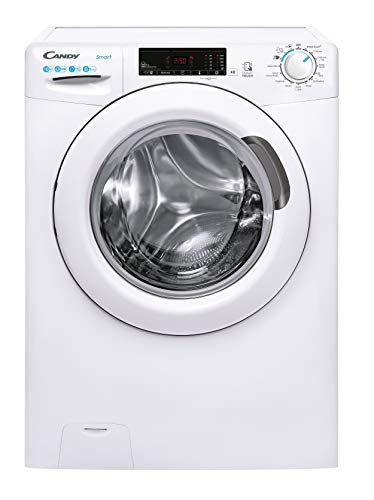Why Buy a 10kg Front Loader?
The 10kg front loader is perfect for large laundry loads, with plenty of room for large wash cycles as well as 13 wash programs including handwash. With its smart technology and advanced features, it's the perfect partner for your laundry at home.
Front loaders are generally slower to wash, and aren't available in larger capacities, and often suffer from mould and mildew. They are more energy and water efficient than top-loaders.
Energy
The primary energy cost in a 10kg front loader is the power used to heat water to operating temperature, and also to run the motor. These costs can also be offset by less energy consumption when compared to top-loaders. This is due to less power required during the spin cycle and agitation, as well as using less water. Certain machines come with low-water cycles that consume less water than the cotton cycle. This helps save energy and water.
In general, front-loading washers consume less soap than top-loaders. The tumbling action of the drum also reduces foamy suds and decreases overflows, without affecting the cleaning action. However the door seals and bellows may be more prone to wear than those in top-loaders. The mechanical agitator in top-loaders also causes significant wear on clothing fabrics. It drags and falls clothes constantly, forcing them against one another. This abrasion is measured by the amount of fabric that is left on the clothes dryer's screen for lint. Lint is mainly made up of stray fibers separated from clothing during washing and drying. A lot of top-loaders are designed to operate at lower speeds and may include the "freshening cycle" to clean the mechanical gears or bellows periodically.

Water
Top-load washers require an impeller or agitator in order to push detergent and water through clothing, which causes mechanical wear and abrasion. simply click the up coming internet page -loaders, on the other hand employ paddles to gently lift and drop clothes into the drum spinning during cleaning, thereby reducing wear. The rate of wear can be roughly estimated by the amount of lint that is collected in dryer lint filters which is mostly composed of threads that are stray from clothes during washing and drying.
Because front-load machines require a lower level of water than top-loaders which means they are less prone to leakage. True front-loaders might require a bellows or seal to prevent water from getting out of the door during operation, but these systems usually do not need to be maintained as regularly as their counterparts on top-loaders.
Additionally, front-loaders are able to operate with cold water or hot and a majority of them without any external heating source, which makes them more energy efficient than top-loaders. This efficiency can reduce operating costs for the same laundry load in places where energy, water and detergent are expensive.
